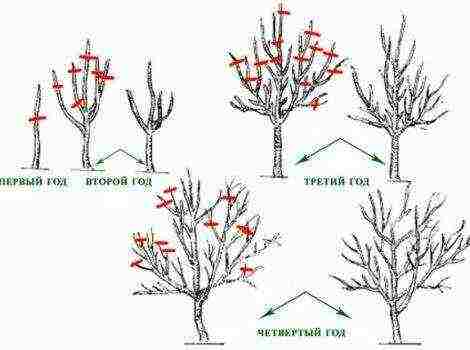Content
Rowan ordinary is loved by Russian gardeners. In the old days, she was planted near houses to protect household members from the evil eye... This tall, beautiful tree retains its decorative effect in all seasons of the year. It is not only decorative, but has medicinal properties, as well as rowan berries are used to make marshmallows, preserves, jams, liqueurs and tinctures. A detailed description of the characteristics of this variety of mountain ash can be found below.
Rowan is a tree with a height of 5 m and more. Sometimes it can reach a height of up to 20 m. An adult tree has a crown 6 m wide. It has a perfectly flat trunk. Therefore, rowan wood is very often used in carpentry.... The trunk and branches are smooth, grayish.
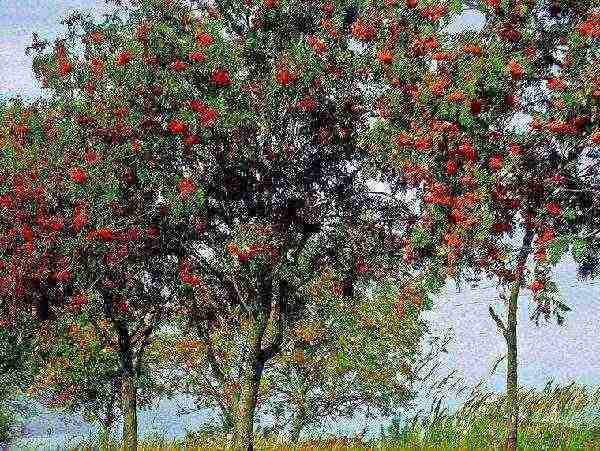
The beautiful leaves of mountain ash are oblong and have an elongated shape. Unpaired, alternate. Due to its leaves, rowan is so popular in landscape design.
Begins fruiting 5-7 years after planting. Gives stable yields from the age of 30. Bears fruit abundantly every 3 years. It blooms in late May and early June. The berries appear in September. When ripe, they are red or black. The color of the berries depends on the variety of mountain ash... The berries are round, usually bitter. There are varieties of mountain ash with a sweet taste. Despite the fact that they are inferior in taste to other berries, they are useful. Due to its beneficial properties, it is successfully used in traditional medicine.
How to grow a tree and get fruit
Landing
Rowan grows and develops in any soil, so it will not be difficult to grow a tree. It is better if the soil is moist, but not swampy. He does not like acidic soils, so before planting you need to lime it.
2-3 year old seedlings are suitable for planting. Best season for planting - this is the middle of autumn in warm areas. In the cold mid-September. Planting is also possible in spring.
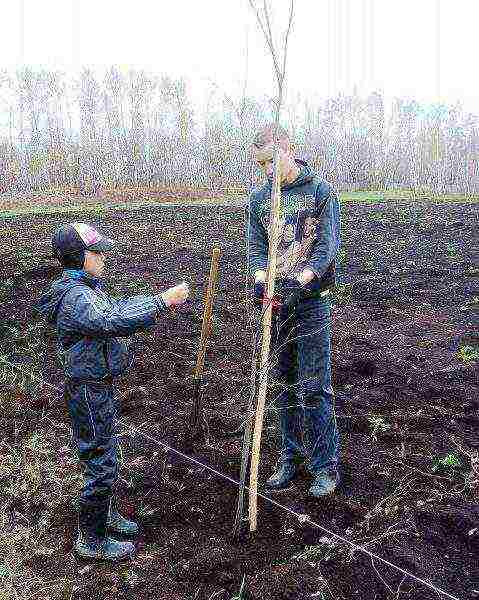
For landing you will need:
- Shovel.
- Peg.
- Watering bucket.
- Leg-split.
Prepare the landing site in advance... Dig up and clear weeds. If several trees are planted, then the distance between them is 4-5 m.
Dig a hole 80 cm deep and 50 cm wide. If the seedling has a strong root system, then the planting hole should be larger. Such that the roots fit freely in it.
In the soil that was taken out when digging the hole, add:
- Superphosphate 600 grams.
- Humus 12 kg.
- Potassium salt 130 grams.
Mix all components thoroughly with earth.
Pour a drainage layer on the bottom of the pit. Pebbles or coarse sand are suitable as drainage. Pour a mound of prepared earth on the drainage. Put a rowan seedling on it. Drive a peg into the center. Spread out roots and cover with soil. Trample it around the barrel. Sprinkle with plenty of water. Mulch the soil around the tree with humus... Tie it with twine to a peg.
Tree care
- Rowan is unpretentious in care... Loves abundant watering. Moisture deficiencies will retard the growth and development of the tree.
- Regular loosening of the soil around the stem... Rowan gives abundant root growth, which must be removed so that a shrub does not turn out. In this case, you do not need to leave the hemp.

- For better growth and development, mountain ash needs top dressing. In spring, nitrogen fertilizers are needed:
- Mullein 1 kg.
- Urea 10 grams.
- Ammonium nitrate 15 grams.
The components are diluted in 10 liters of water.
In the fall, phosphorus-potassium is added.
- Nitroammophoska 20 grams.
- Tall rowan varieties require formative pruning... Dry branches are cut in the spring. The cut is made at an angle of 45 degrees.
Picking berries
Do not delay the collection of rowan fruits. Firstly, it is pecked by birds. Secondly, it becomes tasteless. therefore harvesting occurs at the end of August, beginning of September.
How mountain ash reproduces
Over time, every gardener has a desire to propagate a mountain ash bush. After all, this decorative tree is not only beautiful, but also useful. Rowan can reproduce in several ways:
- Seeds.
- Budding.
- Vaccination.
- Layers.
Seed propagation
The most popular and simple reproduction of mountain ash is by seeds. For this method, the collected seeds in order for them to sprout must undergo stratification for 3-6 months.
To prepare seeds for planting, pick a ripe handful from the mountain ash. Gently mash the berries and rinse the seeds thoroughly with running water. Then mix with peat. Place the mixture in a container and put in a cool place at a temperature of 1 degree.
If there is no basement, place a container with seeds on the top shelf of the refrigerator. Don't forget to moisturize. After the time has elapsed, the seeds should hatch. Now take the seed container out into the air. Bury it in the snow. In the spring, plant the seeds in open ground.
For planting seeds, dig up the area... The soil should be loose and fertile. Free it from the weeds. Apply humus, superphosphate and potash fertilizers. Seeds are planted in grooves with a distance of 25 cm from each other. The depth of planting in the soil is 2-3 cm. Cover with light soil (mix humus or peat with soil).
Thickened seedlings will need to be thinned out. Leave 8 cm between the plants.
Further plant care consists of:
- Loosening.
- Weeding.
- Top dressing.
Undergrowth
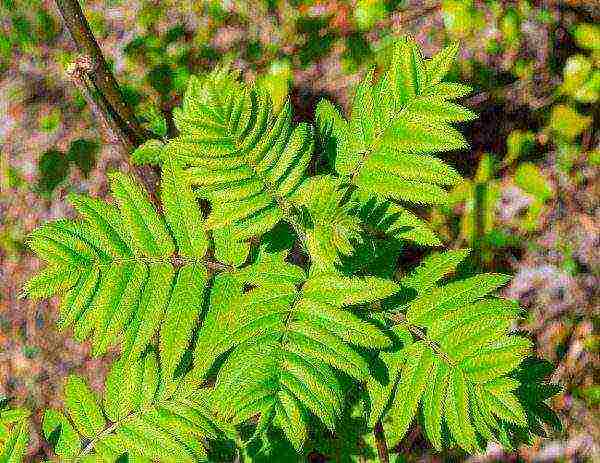
Shoot propagation is not a difficult breeding method. For a good result, you must follow the rules:
- For reproduction, shoots of 2-3 years of life are taken.
- Separate it carefully from the mother tree.
- Leave the growth in place for growing.
- After two years, transplant the grown bush to a permanent place.
Layers
To get good layering for reproduction, a two-year-old shoot is used.
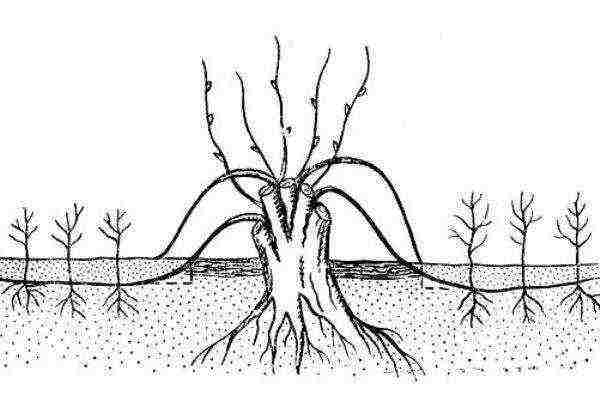
The mother bush must be spud. Be sure to fertilize with humus. Dig up the soil shallowly. Remove the collection grass.
Dig grooves from an adult bush... Depth 10 cm. Place the shoots in the grooves. Strengthen it with fork-shaped hooks. In order for the growth to take root better, make small cuts on the bark. Tie the stem of the mountain ash to the peg. Two years later, if the cuttings have developed a good root system, the cuttings are transplanted to a permanent place.
Oculated
This breeding method is complex and is used to propagate varietal mountain ash.
For the stock, take seedlings of a simple rowan... Since its bark is plastic, it can be easily separated and provides good engraftment.
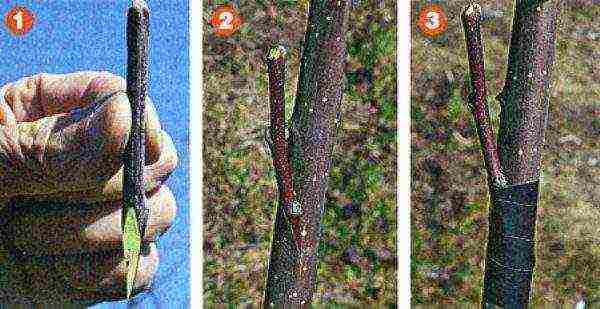
Rowan peeling is done in early August. The process is the same as for apple, pear and other fruit trees. The difference is the cultivation of a rowan seedling.
More on the reproduction of fruit trees and plants:
- Correct reproduction of raspberries
- Cherry propagation methods at home
- 4 ways to propagate plums
A year after budding, cut the stock on a thorn. The height will be approximately 28 cm. Remove all the kidneys on it. A shoot that has grown from a grafted kidney must be tied to a thorn.
A year later, they begin to form a crown.The upper part of the seedling is removed. Where the kidneys are close together. The cut is made at an acute angle to the trunk.
For planting in parks and alleys, the tree is formed high; for gardens, the crown is cut so that it is of short stature... Usually, 3 skeletal branches are laid in the first tier.
Since the mountain ash begins to grow very early, planting should be carried out in the autumn. Fertile, light soils are recommended for planting. As a top dressing, organic matter, phosphorus and potash fertilizers are applied... Trees are planted according to the 6 * 4 or 6 * 3 m scheme. The holes are prepared 60 cm deep, 80 cm wide. A drainage layer of 10-15 cm is poured onto the bottom. A couple of buckets of humus are placed on it. And also superphosphate 250 grams, potassium salt in the amount of 100. Cover the top with soil and plant seedlings.
Seedlings are regularly watered during the growing season. Weed. So that the earth does not dry out under them, the near-stem circle is mulched with peat, humus or straw.
In the fall, you need to whitewash the trunks to protect against sunburn in the spring... So that young trees do not freeze out, in winter they need to be spud to a height of 30 cm.

Fertilizers for mountain ash are applied once every 4 years. When landing, it is shortened. In subsequent years, the removal of diseased, damaged branches is carried out. It is recommended to thin out the crown once every 5 years.... Older trees need rejuvenating pruning. In this case, the main branches are shortened by ⅓ of the length. After rejuvenating pruning, be sure to add top dressing. Organic and mineral fertilizers are applied under the near-stem circle of mountain ash.
Rowan, in its decorativeness, occupies perhaps the first place among trees. She is beautiful in all seasons. In winter, it is decorated with red berry beads. From spring to autumn, a riot of foliage colors. And even more so that mountain ash is not only an ornamental tree, but it is also very useful... It is successfully used in folk medicine for diseases. Therefore, it is advisable to plant a beautiful mountain ash in your garden.
